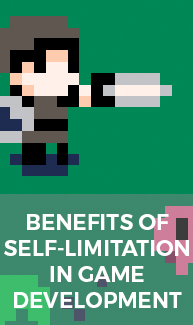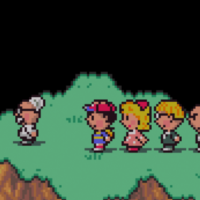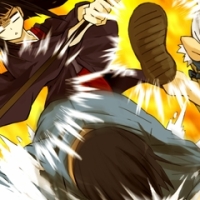
Ikki
Developer(s): Tose, Sunsoft
Publisher: Sunsoft
Platform(s): Arcade, Famicom, PlayStation, Mobile, PC, Wii (VC), PS4 (Arcade Archives)
Release Date: November 27th 1985 (Famicom)
For a single game to define an entire aspect of gaming itself, it has to do something pretty special. Some would argue that Nintendo’s 1985 classic Super Mario Bros. set the conventions for the platforming genre in a way that still stands today, and in the same way Capcom’s Street Fighter II continues to define what makes a great fighting game. These are just a small selection of the kind of titles that have found themselves inscribed on the pages of history, widely considered to be staple titles in their respective genres, as well as holding a powerful influence over the very direction of gaming of all forms, at the time of their release and even in 2016. Sunsoft’s Ikki wields a similar influence in its native Japan; not for remarkable graphics, outstanding gameplay or genre-defining mechanics. Ikki is notable for essentially creating the term ‘kusoge’ – literally meaning “shitty game”.

‘Kusoge’ was the word essayist Jun Miura chose to describe Ikki in his writing, specifically referring to the Famicom version. His piece of writing in Famitsu Tsuushin coined the term, one still used today to generally describe games that simply aren’t any good, which despite their sub-par quality, have garnered a bizarre cult following and surrounding culture. At times humorous, others painful, and all as a result of any number of blaring design flaws, kusoge can often be considered gaming’s equivalent of B-movies, with a number of titles proudly bearing the label of being ‘so bad it’s good’.
In Ikki‘s case, perhaps this status is one more apparent to its Japanese players, who likely have a greater appreciation of its rather historical background. Ikki tells the tale of a humble farming village in medieval Japan, cruelly oppressed by the ruling feudal overlord. Two farmers, Gonbe and Tago (the player 2 character only available in the game’s multiplayer mode) are determined to overthrow this barbaric rule, taking their sickles in hand and setting off across the fields to overcome a fearsome army of ninjas, yōkai and many other obstacles that stand in their way. As a fairly early title for the system, the Famicom version of Ikki leaves some of this revolutionary action up to the imagination, halving the number of stages and removing the game’s opening animation – the challenging gameplay makes it very easy to see this title’s arcade roots shine through, as questionable as its original yen-sucking intentions may have been.

The game controls fairly smoothly, offering eight directions of movement on the Famicom version despite the absence of the arcade release’s 8-way joystick. Both the A and B buttons control your attack, a sickle projectile that looks more like a boomerang than a piece of farming equipment. At close range you’ll have no trouble getting a direct hit on your ninja adversaries, but anything further than a few paces away and you could be in trouble – it’s said that the best offence is often a good defence, and in this case that means you’ll want to be constantly on your toes for the best chance of survival. Dodging shuriken is hardly an easy feat, but it’ll be necessary if you want to make any progress; in a lot of ways, it’s a more effective means of safely navigating each stage than actually using your simple attack. The goal in each level is to either collect all of the ‘koban’ coins dotted around the stage, or alternatively capture the ‘daikan’ (a Japanese feudal lord) who have a random chance of appearing. Whilst it’s easy to understand how the latter could be considered a good aspiration for a revolt, collecting coins seems like a fairly futile exercise, unless the overlord’s castle happens to have an entry fee our two heroic farmers can’t afford. Admittedly, the two heroes in question are running this entire revolution with just two members, so maybe their methods aren’t where the real problems lie.

As you progress from level to level, you’ll find even tougher obstacles lie in wait of your two-man conquest; yōkai and what appear to be handmaidens will grab onto you, slowing your movement and preventing you from using your sickle, making you easy fodder for the fast-moving ninja troops. Lines of riflemen will bombard you with killer projectiles that seem to defy all laws of physics, travelling in obtuse directions to cut your revolt short. Bomb-throwing ninjas up the ante in terms of danger, going against the very concept of stealth championed by the stereotypical ninja in return for explosive power. Luckily, the stage progression gives you more tools to work with when overcoming these enemies; munch on a daikon radish and you’ll find yourself moving at double speed, whilst picking up a bamboo spear will let you pierce oncoming foes with extra range, at the sacrifice of locking your movement to one direction. Surprisingly, a number of these items are exclusive to the Famicom version, making up for the lack of stages by providing you with a more robust arsenal that at times is relieving when you realise your primary weapon lacks any real fighting capability.

Ikki‘s presentation hardly displays a technical feat – as a relatively early Famicom title, it makes use of bold, brightly coloured graphics that, whilst simple in form, are quite intricate and do a fairly good job at setting the scene. Perhaps the game’s historical representation may be lost on the uninformed (something understandably widespread amongst western players), but the large, cartoonish animations displayed by the playable characters and enemies alike are very charming. The game’s soundtrack is simple, yet again wields a certain charm through its simple melodies that carry a sense of urgency and drama with an oriental flair.

The Famicom version of Ikki may lack in terms of content (and in some instances, suffers on a presentational level) in comparison to its arcade counterpart, but it’s still playable. That might not sound like much of a compliment, but for a game that inspired the creation of a word solely used within Japanese gaming culture to describe games that are crap, it’s quite a notable accolade. Despite there being only four stages, Ikki‘s cruel difficulty and bizarre attack that likely requires something of a time investment to truly master gives it a fair amount of replayability for those after a simple, arcade-style romp. With two players the game can be quite fun – I can’t help but feel that the core formula behind the game could make for a strong multiplayer experience with a few tweaks and updates. Despite being labelled as the forefather of terrible games, it was a commercial success and considered one of Sunsoft’s most popular products at the time, leading to multiple re-releases across a number of systems – if you’re looking to sample this feudal revolutionary action game for yourself, pick it up on the Wii Virtual Console or through the PS4’s Arcade Archives collection.















